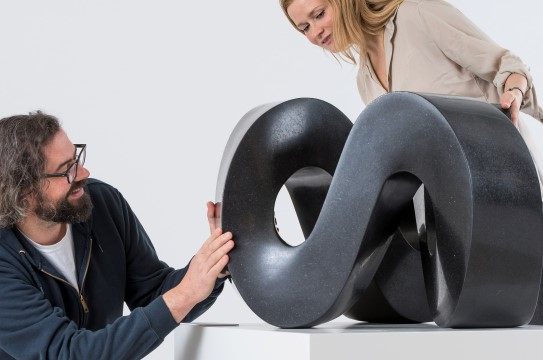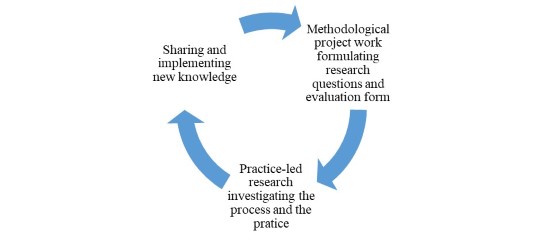New methods for practice-led research and cross-disciplinary project work

What does quality mean in an art museum whose main objective is to reach out to everyone and to be a platform for diversity, participation, and pluralism?
During the international research conference Art in Education at OsloMet in August 2019, curator education at the National Museum, Line Engen, presented the paper "Practice-led Research in the Art Museum: Research on Education Practices Led by the Practitioners". Engen shared her experiences in using new research models for practice-led research in the art museum. The lecture was published as an article in the scientific journal Nordic Journal of Art & Research in the spring of 2021.
The need for increased knowledge about new education practices
The article looks at the field of museum mediation, which is currently enjoying significant growth in art museums. It demonstrates the need for greater awareness of, and increased knowledge about, new education practices. It also highlights the way in which art museums are confronted by new expectations from society and policymakers, in relation to being a relevant social and democratic platform – available to everyone. In order to attain such accessibility, Engen argues that art museums must draw upon a broad spectrum of knowledge, in which knowledge about the audience plays a key role.
A desire to challenge the traditional professional hierarchy
The article also examines the role of the traditional professional hierarchy and the hegemony of knowledge in art museums, which have historically put emphasis on knowledge about the collection and artworks rather than on knowledge about the audience, education, and practice. Engen claims that an important cause for this imbalance has been the lack of adequate practice-related research methods. She points out that the definitions of the terms “knowledge”, “professionalism”, and “quality” have been too narrow. Engen thus poses the questions: what does knowledge, professionalism, and quality entail in an art museum whose main objective is to reach out to everyone and to be a platform for diversity, participation, and pluralism? How can a museum’s bid to be a relevant platform in today’s society, be addressed through research?
Developing new standards of research
Engen refers to art museums around the world which now employ models from other disciplines in order to develop new research standards. Among them, she singles out Tate in the UK, led by the head of research, Emily Pringle, as a museum which has undergone comprehensive change – largely due to changes in mentality about the public, practice and research.
A new model for museum research
The article reflects upon how and why it is important for educators to conduct research on their own practice. It puts forward a proposal for a research model that emphasises practice-based research, methodological interdisciplinary project work, and the sharing of knowledge. The main argument is founded on the model from Tate, Engen’s own practical experience and other theoretical perspectives – including various educational models and Lars Laird Iversen’s book Uenighetsfelleskap: blikk på demokratisk samhandling, which translates to: "The Community of Disagreement. Perspectives on Democratic Interaction."

References
Engen, L. (2021). Practice-led Research in the Art Museum: Research on Education Practices Led by the Practitioners. Nordic Journal of Art & Research, 10(2). https://doi.org/10.7577/information.3769
Iversen, L. L. (2014). Uenighetsfelleskap: blikk på demokratisk samhandling. Universitetsforlaget.
Pringle, E. (2019). Rethinking Research in the Art Museum. Routledge.